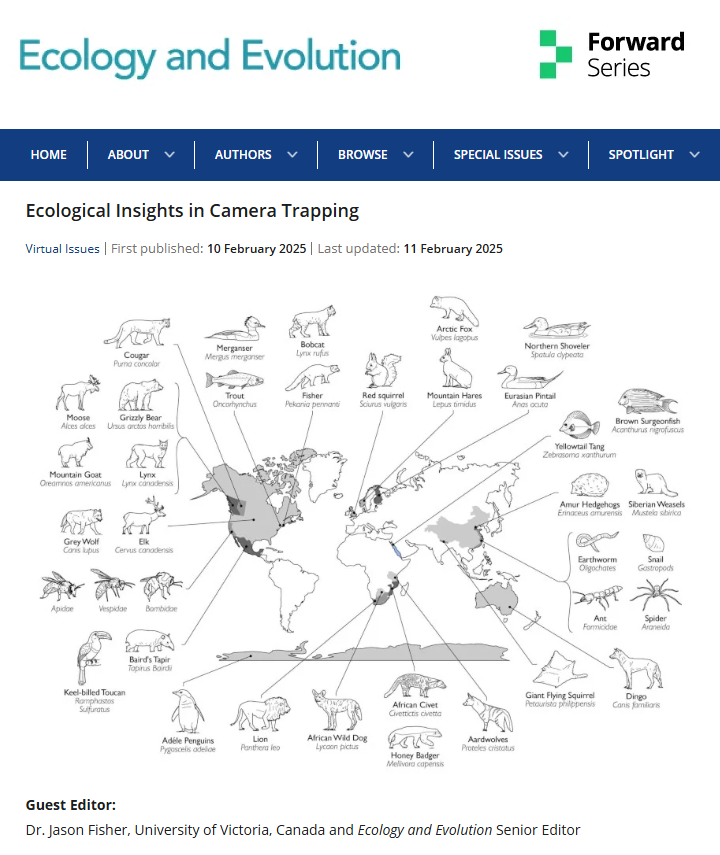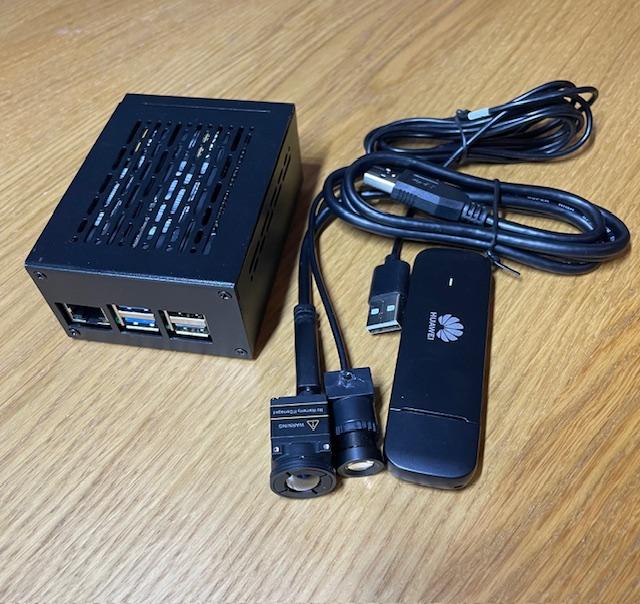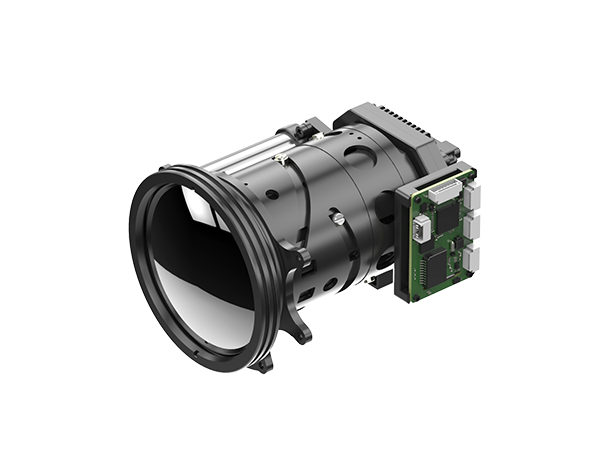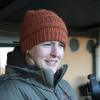New open source Kinéis transmitter for €50
12 June 2025 10:12am
9 July 2025 7:38am
Hi Jared,
That's great. There's lots of possibility for integration.
The SMD Breakout board schematics and Altium files are available below for the pinout to the board itself and to integrate into your products. We are publishing the SMD files together with a new Getting Started guide in the next few weeks to support this too. https://github.com/arribada/featherwings-argos-smd-hw/
GitHub - arribada/featherwings-argos-smd-hw: A breakout board for integrating the ARGOS-SMD module with Adafruit Feather boards.
A breakout board for integrating the ARGOS-SMD module with Adafruit Feather boards. - arribada/featherwings-argos-smd-hw
14 July 2025 11:16pm
Amazing. Thanks for pointing them out. Didn't see it.
Investment Team Member
14 July 2025 3:22pm
Training Course in Installation, Use and Maintenance of DHIS 2
14 July 2025 10:22am
Halow wifi, local AI, thermal + visible
6 July 2025 11:15am
12 July 2025 1:08am
Thanks for sharing! I've been thinking about using WiFi links for some applications. Any idea how much power they require?
12 July 2025 6:53pm
Idles around 2W, peaks a bit more than 6W.
4th Global Soil Biodiversity Conference
11 July 2025 12:38pm
Swedish Biodiversity Symposium
11 July 2025 12:24pm
Audiomoth and Natterjack Monitoring (UK)
23 December 2020 8:16pm
18 June 2025 11:41am
Just out of curiosity (and apologies for resurrecting such an ancient thread) - did you ever get this off the ground? I just saw an article that mentioned how noisy natterjack toads are so I thought I'd google whether anyone's using bioacoustics to monitor them, and this popped up!
27 June 2025 3:53pm
Issy (hi again!) - I'm currently trying to finish off a paper based on three years of natterjack survey at WWT Caerlaverock, and am currently involved in a new project this year, where I'm working with ARC with deployments at Saltfleetby, Talacre (just got back from there a few minutes ago), and Woolmer Forest. So yep, definitely off the ground with this species. Ta, Carlos
11 July 2025 12:19pm
Just to provide an update to my post from 2021. Colleagues and I at the BTO have built a species classifier now for the BTO Acoustic Pipeline for the sound identification of all UK native and non-native frogs and toad species - including Natterjack Toad.
As with all our audible / bird classifiers, this will be free to use where the results / data can be shared.
We are currently working with researchers at ARC, and a few other individuals to test and refine the identification for particular species before we make this publicly available.
I would be interested to hear from anyone with sound recordings of Natterjack Toad, who would be happy to try out a beta version of the classifier.
Need Assistance regarding selecting a camera
23 December 2022 10:50am
11 February 2023 3:20am
Hi Vishnu,
Considering only motion detection video, it is possible to modify (most) camera traps to trigger an external piece of equipment like an audio recorder. I'm not aware of any suitable off-the-shelf recorder, but I can build you one. However many camera traps that will take video will also record audio, although the quality may not be suitable for all types of audio analysis.
11 July 2025 6:29am
Yes. Thank you. We bought Brinno TLC 300 and we just deployed it.
11 July 2025 10:33am
We have a camera that could do this over some distance away due to a thermal module being involved. It will also record very high quality audio (Nature recording audiophiles rave about the microphone being used). can trigger on motion detection and also in addition to a thermal module has a low light module that can record in colour under moon light. Normally, the system records continuously and triggered for video alerting as it can be accessed remotely.
But it would draw much more power than microcontroller based systems (Around 5W for motion triggering) so you would need to place a solar panel with it and it would be quite a big one. This is offset by the ability to view from much greater distances, audio record, perfect visibility in pitch darkness.
Our next work packages will be to make a website to highlight all that, we don't have that yet. It would cost more than the brino as well, however likely you would need less instances (Maybe one versus many).
Below is a video review of the em272 microphone, which is what we use in our setup for recording the audio. We also merge in this external audio into our continuous video streams.
It could also record 24/7 continuously full motion h264 video with em272 microphone audio without replacing the media if you wish. It would need power for that whole time though.
Please contact me directly if this is relevant to your use case.
Advanced Data Collection and Management with REDCap
11 July 2025 7:26am
GBIF: Conectando datos abiertos de biodiversidad con conocimiento y acción
 Vanesa Reyes
and 1 more
Vanesa Reyes
and 1 more
10 July 2025 8:32pm
Future For Nature Awards 2026
10 July 2025 7:42pm
Water Quality Remote Sensing Lead
10 July 2025 7:40pm
Conservation Nation Grant Program
10 July 2025 7:37pm
Assistant Project Manager - Ecological Restoration
10 July 2025 7:30pm
Training Course in Mobile Data Collection using KoboToolbox
9 July 2025 9:41am
Big if True Science Accelerator (BiTS)
8 July 2025 6:42pm
CamTrapAI Workshop Series
8 July 2025 3:03pm
Assistant, Associate or Full Professor, AI & Society
8 July 2025 3:00pm
Drone Operations Manager
8 July 2025 2:15pm
What Can Camera Traps Data Tell Us? (Besides the Obvious)
22 May 2025 10:24pm
16 June 2025 2:28pm
A related publication that might be of interest, with the Norwegian Arctic Fox monitoring program we used camera trap time series to study phenological plasticity in arctic fox moulting, specifically the transition from winter to summer coat. We were looking at how this process responds to environmental variation, such as the length of the snow season and temperature fluctuations (e.g., colder years with prolonged snow cover vs. earlier snowmelt and warmer winters). This builds on similar ideas of extracting phenological and climatic insights from camera trap data. :)
Here's a link to the publication "A camera trap-based assessment of climate-driven phenotypic plasticity of seasonal moulting in an endangered carnivore" https://doi.org/10.1002/rse2.304
18 June 2025 12:27pm
Great! thank you @Lucie_LprtDvldr !
7 July 2025 9:46am
Here is a nice review on the use of camera traps in various ecological contexts:
https://onlinelibrary.wiley.com/doi/toc/10.1002/(ISSN)2045-7758.ecological-insights 
Monitoring Wolf Communication with DIY Camera Setup – Feedback & Advice Welcome!
23 June 2025 1:59pm
30 June 2025 6:51pm
And a system with a 640x512 thermal and visible light camera (Cheap, not sensitive one) looks like this:
An alternative to getting really close is further away with a long thermal lens. These are more expensive than the lens above and the price goes up the bigger the lens, but it does open up possibilities. Also available for those with big budgets are 1280x1024 resolution thermal modules and zoomable thermal imaging lenses. The zoomable one has a 30-180mm zoomable lens and looks like this:
2 July 2025 10:59pm
A few bits of free/cheap improvement on waterproofing which is always a massive pain:
- if you can't seal it entirely then drill a drain hole in the bottom
- Cover every exposed electronic bit you can with a spray-on clear coat. Clear nail varnish for small areas. You can get electric specific products but most spray laquers work.
- Smear dielectric grease on battery and cable connections you can't protect with clear coat.
6 July 2025 2:11am
Super nice project!
How do you imagine thermal cameras will help with vegetation? It cannot exactly look though it.
Rather than placing the camera inside the metalbox have you thought about simply placing it high and out of reach of the wolves?
[Official] Reolink Go Ranger PT - 1st 4K 4G Cellular Trail Camera
The Go Ranger PT offers true 4K image quality and excellent night vision with a large F1.6 aperture and the invisible 940nm no-glow IR LEDs. The battery camera also comes with a solar panel and works over a 4G mobile network, perfect for a wilderness adventure, such as observing wildlife, etc.
Although it sounds like you are happy with locally saved footage, having some live feed is a great insurance that the system is up and running and not in need of service!
Looking to connect: data scientist diving into conservation
26 June 2025 10:29am
27 June 2025 12:39pm
Hi Carly,
Thanks so much for this information! Sounds really great! :)
27 June 2025 12:39pm
Hi Carly,
Thanks so much for this information! Sounds really great! :)
29 June 2025 5:14pm
Hi Aleksandra,
Welcome! I'm also from a technical background (software development, data engineering, and data science) and making the shift into conservation tech. Like you, I don't come from a formal biology or ecology background, but I share a strong interest in using data-driven approaches to help protect nature.
Your focus on the ocean resonates with me. I think it's incredibly exciting how machine learning and data tools can support things like biodiversity monitoring, acoustic analysis, marine spatial planning, and more.
I’d be really keen to swap notes on transitioning into this space, learn about the projects you're interested in, and share resources. Feel free to reach out or post more about what you're exploring!
Manish Gadhvi
https://www.linkedin.com/in/mgadhvi
https://github.com/mgadhvi
CSS Asian elephant rapid response grant
4 July 2025 9:31pm
Join us to turn environmental insight into real-world action
4 July 2025 12:38pm
Acoustic recording tags for marine mammals (soundscape research)
5 June 2025 6:04pm
30 June 2025 3:36pm
Hi There!
For biologgers, I think there are a few on the market that have been attached to marine mammals. I've provided a few links to ones that I know have been used for understanding the behavioural responses to sound - Dtags made by SMRU and Acousonde tags.
You could also have a look through The Inventory here on WildLabs for other devices on the market.
Hope that helps!
Courtney
3 July 2025 9:08am
Hey Maggie,
@TomKnowles and his team, 2025 awardees, are working on a acoustic tags to be deployed Basking Sharks!
3 July 2025 7:22pm
Thanks @Adrien_Pajot, we are!
Also buoys!
Bioacústica de insectos para la conservación
3 July 2025 4:08pm
Training Course in Mobile Data Collection Using ODK
3 July 2025 9:39am
Monitoring bat and bird collisions at MET Tower
11 June 2025 5:14am
30 June 2025 4:55pm
Hi Adam,
Have you connected with Wildlife Imaging Systems? Their thermal system can detect bird and bat activity. My company collaborates with them, and we have previously worked on developing algorithms to distinguish collisions from other activity.
Wildlife Imaging Systems
" /> <link rel=
1 July 2025 2:51pm
Looks ideal
3 July 2025 12:56am
Yes, thanks Riley and Kim. Someone suggested WIS and I am currently in discussions with them. Their system seems especially well suited for the purpose and I am hoping it works out.























2 July 2025 11:59pm
Awesome news! Sorry if this question is addressed but I didn't see schematics on the page. If this is open source do you release the full PCB layout files? I can see this being a great base for many applications, including commercial operations.